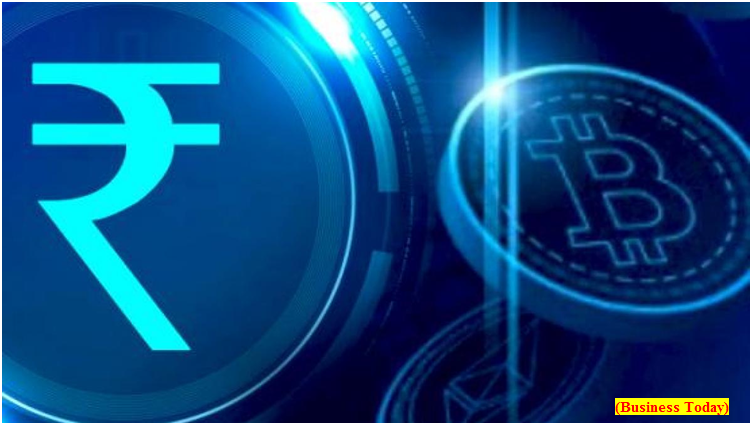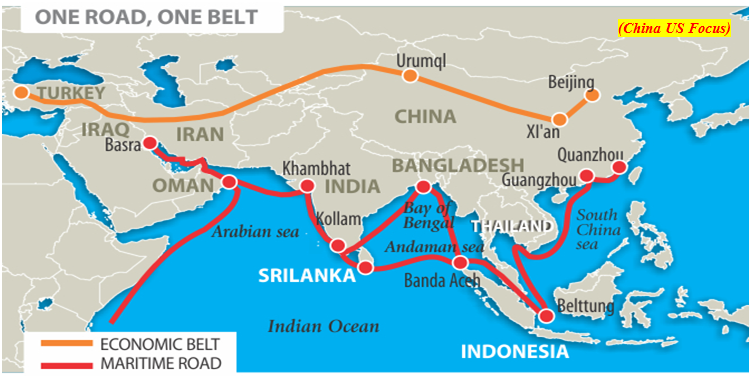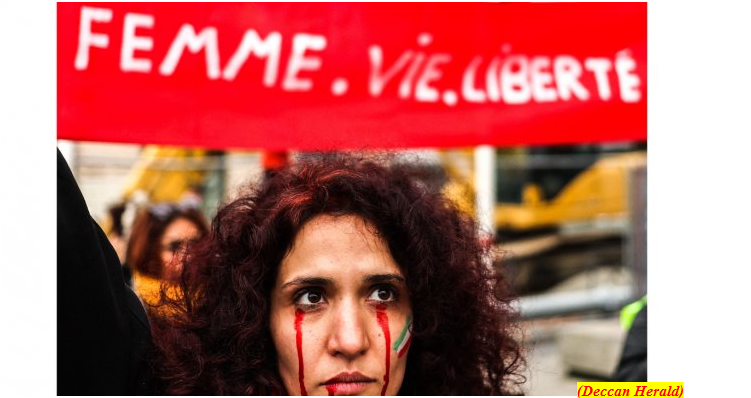Why has the Reserve Bank of India introduced an e-rupee (GS Paper 3, Economy)

Why in news?
- The Reserve Bank of India recently launched the digital rupee on a pilot basis.
- The digital currency will be offered by a select group of public and private banks in a few major cities initially, which can be used for both person-to-person and person-to-merchant transactions.
What is the digital rupee?
- The digital rupee, or the e-rupee, is a central bank digital currency issued by the RBI.
- The digital rupee is recognised as legal tender by the RBI, and thus has to be accepted by everyone in the country as a medium of exchange.
- It is, however, different from deposits that you hold in a bank. Unlike deposits which are paid interest, the digital rupees in your wallet are not paid any interest by the central bank. Deposits held in banks can be converted into digital rupees and vice-versa.
Is there a need for the digital rupee?
- The RBI believes that the digital rupee will make the rupee more attractive as a currency to users when compared to cryptocurrencies.
- Cryptocurrencies have been viewed by many investors as alternatives to fiat currencies which progressively lose value over time due to debasement by central banks. Since such a trend could threaten their sovereignty, central banks have been trying to come up with their own digital currencies.
- The RBI also believes that the digital rupee will be easier and more economical to produce when compared to physical cash notes. More importantly, transactions carried out using digital rupees, in contrast to physical transactions, are more easily traceable by authorities.
What are the risks?
- The introduction of central bank digital currencies internationally has worried many who believe that it could disrupt the banking system.
- When interest rates offered by banks are low, people may be more prone to converting their bank deposits into digital currencies since they would not lose out much in the way of interest income by making the shift. Such an event could cause the cash holdings of banks to drop and hinder banks’ capacity to create loans.
- The ability of banks to create loans is influenced by the amount of cash they hold in their vaults. This is because the cash position of a bank determines its ability to expand its loan book while keeping the risk of a bank run under control.
- The digital rupee could also play a crucial role in India’s transition towards a cashless society. A rise in the use of the digital rupee could eventually free banks from having to maintain sufficient cash deposits before they expand their loan books.
- This could happen if digital rupee deposits turn out to be considered equivalent to other forms of virtual money such as deposits created initially as loans by banks. In such case, banks will be freed from the risk of bank runs which have traditionally served as a check on the unrestrained expansion of loan books.
What do the critics say?
- Critics point to the power that digital currencies give central banks to supervise economic activity, and believe that this could act as a deterrent to economic growth if legitimate economic activities are deemed illegal by governments.
- The future of central bank digital currencies as an alternative to private cryptocurrencies may also be overblown.
- Private cryptocurrencies have found demand among certain investors not simply because they are digital. Rather, they are thought to be better stores of value, exhibiting more stable purchasing power than fiat currencies.
Chinas moves in the Indian Ocean
(GS Paper 2, International Relation)
Why in news?
- Recently, Chinaconvened the first “China-Indian Ocean Region Forum” in the southwestern Chinese city of Kunming.
- The meet organised by the China International Development Cooperation Agency (CIDCA) is the latest Chinese initiative focusing on the Indian Ocean Region (IOR), underlining China’s growing strategic interests in a region where its economic footprint has been deepening.

What is the China Indian Ocean Region forum about?
- The first high-level official development cooperation forum jointly held by China and countries in the Indian Ocean Region” and “over 100 participants, including senior officials from 19 countries bordering the Indian Ocean” attended.
- The forum issued a “Joint Press Statement” that noted China “proposed to establish a marine disaster prevention and mitigation cooperation mechanism between China and countries in the Indian Ocean region” and “all parties agreed” to “strengthen policy coordination, deepen development cooperation, increase resilience to shocks and disasters, and enhance relevant countries’ capacity to obtain economic benefits through use of marine resources such as fisheries, renewable energy, tourism, and shipping in a sustainable way.”
Which countries have backed the forum?
- The organisers have said the forum was attended by “high-level representatives” and “senior officials” from 19 countries: Indonesia, Pakistan, Myanmar, Sri Lanka, Bangladesh, Maldives, Nepal, Afghanistan, Iran, Oman, South Africa, Kenya, Mozambique, Tanzania, Seychelles, Madagascar, Mauritius, Djibouti, and Australia.
- But at least two of those countries, Australia and Maldives, subsequently released statements rebutting the claim, emphasising that they did not participate officially.
Where does India stand?
- CIDCA, said India as “a major country in the Indian Ocean region, was invited to this forum” and added that China “looks forward to meeting India at the next forum”. That prospect appears unlikely.
- India has viewed China’s recent moves in the region warily, including the recent visit of a Chinese military tracking vessel, the Yuan Wang 5, to Sri Lanka.
- Moreover, India sees the Indian Ocean Rim Association (IORA) as an already established platform for the region, which has 23 members, including Australia and Maldives with 10 dialogue partners which include China, Japan, Russia, the U.K. and the U.S.
What are China’s plans for the IOR?
- The forum has underlined China’s stepped-up interest in the IOR, where it is already a major trading partner for most countries and where lie sea routes vital to China’s economic interests.
- The stepped-up regional diplomacy comes while China is establishing a more frequent military presence in the waters of the IOR.
- China’s first ever overseas military facility was set up in Djibouti near the Horn of Africa. Chinese military ships, tracking vessels, and submarines have been visiting ports in the region with greater frequency.
- Chinese military planners have previously said the PLA Navy, which earlier in 2022 launched its third aircraft carrier, has a long-term plan to deploy six aircraft carriers to secure China’s maritime interests, and that two of them will be based in the Indian Ocean Region.
Protest-hit Iran abolishes morality police
(GS Paper 2, International Relation)
Why in news?
- Iran has scrapped its ‘morality police’ after more than two months of protests triggered by the arrest of Mahsa Amini for allegedly violating the country’s strict female dress code.
- Women-led protests, labelled "riots" by the authorities, have swept Iran since the 22-year-old Iranian of Kurdish origin died on September 16, three days after her arrest by the morality police in Tehran.

Morality police:
- The morality police known formally as the Gasht-e Ershad or "Guidance Patrol" were established under hardline President Mahmoud Ahmadinejad, to spread the culture of modesty and hijab, the mandatory female head covering.
- The units began patrols in 2006.
- Both men and women officials are part of the morality police.
The contested hijab:
- Iran has a long history of policing the hijab. During the reign of Reza Shah Pahlavi in 1936, the hijab was actually banned in an effort to “modernise” the country. The police would then remove the hijab from the heads of women seen wearing it in public.
- This situation was turned on its head after the Revolution, when conservative forces aligned with Ayatollah Ruhollah Khomeini deposed Mohammed Reza Pahlavi, son of Reza Shah, and proclaimed the Islamic Republic.
- While wearing the hijab was made mandatory, a force was constituted to enforce the rules on morality and the public appearance of women only in the 1990s, after the war broke out with Saddam Hussein’s Iraq, and the regime felt the need to centralise its power and underline an Iranian national identity.
Morality functions:
- Not only the enforcement of hijab, but the implementation of other rules on public appearance and conduct, according to the Iranian authorities’ interpretation of the Sharia, are also the responsibility of the police.
- In 2010, for instance, Iran’s Ministry of Culture and Islamic Guidance issued a template for suitable haircuts for men in order to halt Western influence on culture, and the morality police were tasked with enforcement at salons.




